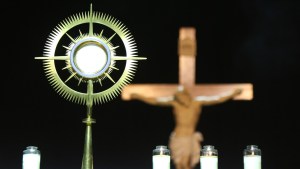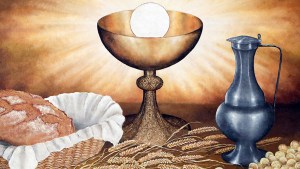More than 20 years ago, I put St. Peter’s Basilica on the list of my “Top 5 places in the world,” along with the sites of our family’s favorite park, favorite hike, and the Omaha Zoo.
We visited again last week, and 20 years later I found that the most impressive thing about St. Peter’s Basilica is also the simplest.
To see it, you have to pass a sign that says “Only those who wish to pray may enter,” reassure a security guard who challenges you about your intentions, then push through a curtain.
But by the time you get there, you have already been dazzled by seeing dozens of “Lincoln Memorials,” hung on a giant wall.
In St. Peter’s Basilica, the statues close to the ground are six feet tall; the statues further up the wall look the same height, but in order to create that impression they have to be four times bigger — only a little smaller than the Abraham Lincoln statue in his Washington, D.C., memorial.
It creates an astounding effect, even in the 21st century. I can only imagine the impression it made on the people who first saw it in the 17th century.
More than the amazing art is the feel of the place. St. Peter’s Basilica feels like home.
Visiting the Basilica is like walking into your mother’s house and seeing old friends.
Even with the press of tourists who don’t understand the faith at all, the Basilica gives the distinct feeling of returning to Mother Church.
The statues and mosaics feel like the images a mother keeps of her children, which they are, and make you realize you are part of an extraordinary family, which you are. And just like it’s hard to find a photograph of your mother in your mother’s house, appropriately, the Mater Ecclesiae (Mother of the Church) mosaic is small and off to the side.
Even more powerful than the statues are the tombs.
My wife and I weren’t expecting to be as powerfully moved as we were by the tomb of St. John Paul II, helpfully located near the entrance of the Basilica. Kneeling there, the memories came flooding back of all he did for us and I began speaking to him like a deceased parent. After all, his remarkable pontificate was as responsible for our spiritual life as our parents were for our physical life.
As we walked along, we kept coming across the tombs of people who gave us great gifts. I thanked St. Paul VI, my first pope, for the Mass whose cycle of readings has given me a grasp of Scripture I never would have had without it, and I thanked Pope Benedict XVI for teaching me how to think through life’s big questions with his enormous corpus of clear theology.
But there was one place that was at the same time less dazzling and more satisfying than anywhere else.
I say “one” but it was really two that were simultaneously one: The two tabernacles we found with flickering sanctuary lamps signaling the real presence of Jesus Christ in the Eucharist.
Everything else in the basilica is a monument to human achievement using the most expensive materials on earth, crafted by some of the greatest craftsmen in history. But here you find a monument to God’s achievement using plain ingredients that cost next to nothing.
At the first Blessed Sacrament Chapel we came to, the Eucharist was exposed for adoration. The few nonbelievers who got past the guard looked around briefly, then left, bored. But my wife and I knelt with the true believers and stared.
The chapel is certainly well-appointed, with a Bernini tabernacle and adoring angels, but the real attraction is the consecrated host in its plain monstrance.
There is a certain feeling you get in the presence of the Blessed Sacrament that I heard best described by a Protestant woman.
One of our parishioners in Kansas shared what a Protestant friend told her after attending a few events in our church. “I don’t know what it is about your church. I don’t like the music or the preaching, but I always leave there feeling more at peace than I do after leaving my own church.”
What she felt in Kansas, we felt in Rome: Jesus was there.
Non-believers who visit St. Peter’s have plenty to be dazzled by, but the soul of the place — the source of its peace and joy — is him. He makes it feel like home.
So now I have a new top place to be in the world.
The best place in the world is any tabernacle, where the one Lord unites us all, making each of our lives as great as St. Peter’s Basilica.



